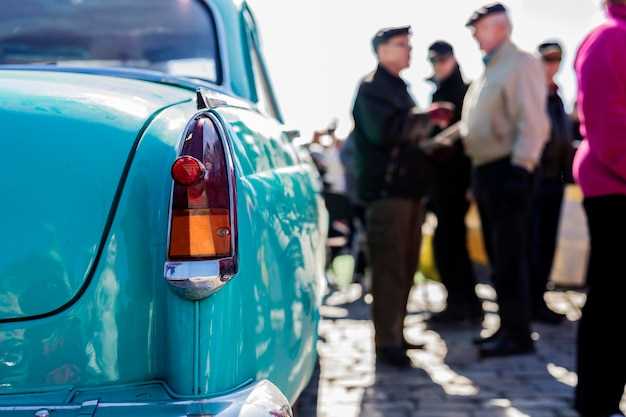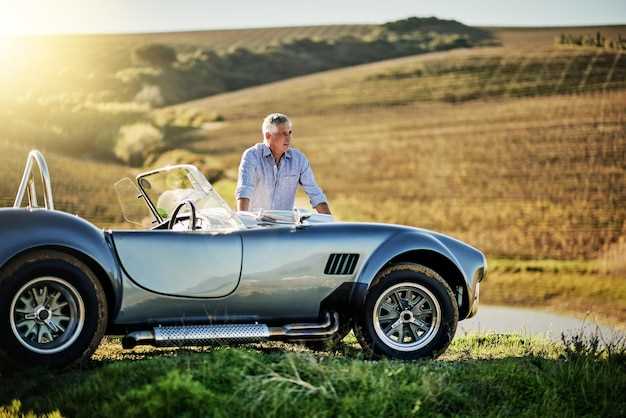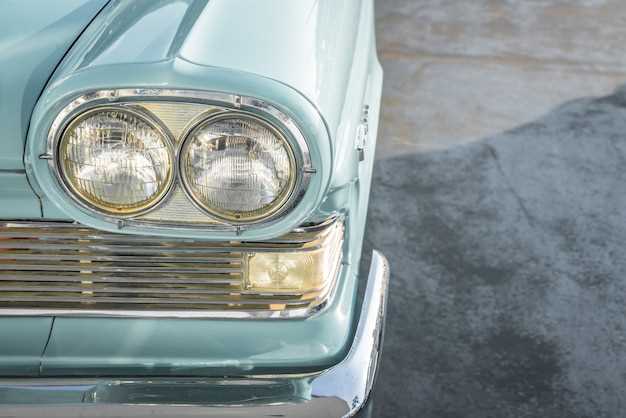
In recent years, the classic car market has undergone significant transformations, with certain models witnessing remarkable appreciation in value. The surge in interest among collectors and enthusiasts has driven up prices, making some vehicles not just a passion but also an investment opportunity. Understanding which classic cars have experienced the most substantial value growth allows potential investors to make informed decisions in this thriving market.
As we delve into the classics of the past decade, it’s essential to highlight how various factors contribute to value appreciation. Rarity, historical significance, and conditions of the vehicles play crucial roles in determining their current market worth. The allure of timeless designs and the nostalgia associated with particular eras often lead to heightened demand, further pushing up prices.
In this article, we will explore some iconic classic cars that have not only captured the hearts of automotive enthusiasts but have also shown significant value appreciation. Whether you are a seasoned collector or a newcomer to the world of classic cars, understanding these trends can help you navigate this dynamic marketplace effectively.
Identifying the Top Classic Cars with the Highest Appreciation Rates

The classic car market has seen remarkable appreciation in recent years, making certain models highly sought after by collectors and enthusiasts alike. Understanding which classic cars have experienced the highest appreciation rates is essential for investors and hobbyists looking to add valuable pieces to their collections.
One significant factor influencing appreciation is the rarity of a vehicle. Limited production models, such as the Ferrari 250 GTO and the Porsche 917, have shown astronomical value growth due to their scarcity. These cars are not only beloved for their design and performance but also for their iconic status in automotive history.
Another crucial aspect is the provenance of the car. Vehicles with a notable racing background or ownership history tend to appreciate more significantly. For instance, the Shelby Cobra, with its racing pedigree and stories of legendary drives, continues to command high prices and shows consistent appreciation over time.
Condition and originality play vital roles as well. Classic cars that retain their original components and are in excellent condition are attracting buyers willing to invest more. Models such as the Aston Martin DB5 and the Jaguar E-Type have experienced substantial appreciation due to their exceptional condition and classic appeal.
Market trends also impact appreciation rates. Popular brands, such as Ford with its Mustang and Chevrolet with the Corvette, have shown resilience and strong growth due to their iconic status and broad appeal among collectors. Enthusiast-driven movements often lead to spikes in specific models while reshaping demand across the classic car market.
Ultimately, identifying classic cars with the highest appreciation rates involves a combination of analyzing rarity, provenance, condition, and market conditions. As the classic car landscape evolves, staying informed about these factors can aid both collectors and investors in making strategic decisions in this dynamic marketplace.
Factors Driving Value Increase in Classic Cars Over the Years
The appreciation of classic cars has become a notable trend in the automotive market, with several factors contributing to this value increase. Understanding these drivers can provide insights into why certain vehicles appreciate more than others.
Scarcity plays a critical role in a car’s value growth. As time passes, the number of well-maintained classic cars diminishes. Limited production models or those with unique features often see significant appreciation due to their rarity, making them highly sought after by collectors.
Condition is another vital factor. Cars that have been preserved or restored to their original state tend to command higher prices. Vehicles with low mileage, original parts, and thorough documentation of their history attract buyers willing to pay a premium, further driving their value upwards.
Market Trends also influence the appreciation of classic cars. Changes in consumer preferences, nostalgic interests, and broader economic conditions can impact demand. For instance, a resurgence in interest for specific brands or eras can lead to an increase in prices, as more enthusiasts seek to obtain these iconic vehicles.
Historical Significance can significantly impact a car’s valuation. Models that have made a notable impact on automotive history, whether through innovation, design, or motorsport achievements, tend to appreciate more rapidly. Buyers often look for cars with compelling stories or connections to significant events, elevating their desirability.
Investment Potential is increasingly recognized among collectors. As classic cars have demonstrated strong appreciation trends over the years, more investors have entered the market, treating cars as tangible assets. This influx of capital can drive prices even higher, as buyers compete for high-value models.
In conclusion, the appreciation of classic cars can be attributed to several factors including scarcity, condition, market trends, historical significance, and investment potential. These elements collectively enhance the desirability of classic vehicles, ensuring their value continues to grow over time.
Tips for Investing in Classic Cars: Maximizing Value and Returns

Investing in classic cars can be a rewarding venture, not only for the passion of automotive history but also for the potential financial appreciation. Here are essential tips to maximize your returns.
1. Research the Market: Understand current trends and historical values. Focus on models that have shown consistent appreciation over the years. Analyze auction results and classic car shows to identify desirable brands and types.
2. Condition Matters: The condition of a car significantly affects its value. Invest in vehicles that are well-preserved or have undergone comprehensive restorations. A car in excellent condition tends to appreciate more rapidly than one that requires repairs.
3. Rarity and Demand: Limited production models or those with unique features often fetch higher prices. Look for vehicles that have a strong collector following. Rare cars typically appreciate more than mainstream models.
4. Maintenance and Documentation: Regular maintenance and keeping detailed service records enhance a car’s value. Documenting ownership history can also attract buyers, as provenance often influences appreciation.
5. Timing Your Purchase: Like any investment, timing can impact value. Consider acquiring classic cars during off-peak seasons or market downturns when prices may be lower.
6. Store Wisely: Proper storage can prevent deterioration, thus preserving the car’s value. Use a climate-controlled environment to protect the vehicle from humidity, temperature changes, and external elements.
7. Network with Experts: Building relationships with classic car clubs, dealers, and auction houses can provide valuable insights into market trends. Networking can also help you discover investment opportunities before they become widely known.
8. Diversification: Consider spreading your investments across various makes and models. This strategy can mitigate risks associated with market fluctuations in specific segments of classic cars.
9. Enjoy the Process: While financial appreciation is essential, remember that classic cars are also about passion. Engage with the community, participate in shows, and enjoy the vehicles. Your enthusiasm can lead to better investment decisions.
By following these tips, you can enhance your chances of maximizing value and returns on your classic car investments.
